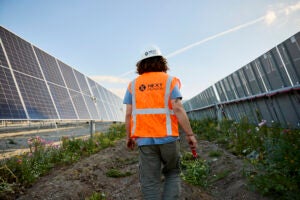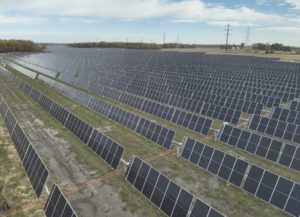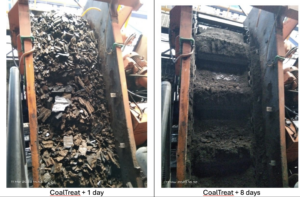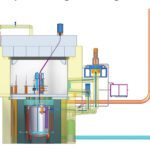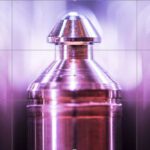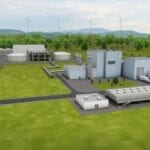DeepGEO, a multinational spent nuclear fuel (SNF) repository developer, and Copenhagen Atomics, a Danish advanced thorium reactor innovator, have signed a first-of-its-kind collaboration agreement that seeks to revolutionize the nuclear fuel cycle by aligning emerging waste management solutions with next-generation reactor technologies.
The landmark collaboration marks an industry-first effort to unite a reactor designer and a multinational waste repository developer to address the nuclear sector’s dual challenges: managing spent nuclear fuel and ensuring its long-term utility. The partners aim to tackle persistent challenges in reprocessing SNF and reducing long-lived radioactive waste, with the overarching goal of ensuring the nuclear fuel cycle’s long-term sustainability. A key aspect of their effort is to redefine SNF as a valuable resource rather than a liability.
As the agreement notes, SNF management remains a long-standing concern for the nuclear industry. Though SNF is stored safely in SNF pools at nuclear sites or in dry casks, “The world has approximately 300,000 tons of SNF in storage, and multiple countries have expressed interest in using a multinational solution for this material.”
A Pioneering ‘Back-End’ Pact
Rhode Island–based DeepGEO, is developing multinational SNF repositories through subsidiaries in Canada, Europe, and Africa with a mission to provide sustainable resource management. “DeepGEO is making steady progress with its potential host locations and is also in dialogue with multiple entities that would benefit from employing the expert services of another entity to efficiently manage and dispose of the SNF in their possession,” the agreement notes.
Copenhagen Atomics, meanwhile, is developing the “Waste-Burner,” a passively safe, thorium molten salt reactor heat source that generates power from a combination of nuclear waste and thorium. The 100 MWth fission heat source is designed to be factory-built and fit into a standard 40-foot shipping container, enabling transportation via trucks, trains, or ships. The Waste-Burner reactor consumes transuranics, including plutonium, as a “kickstarter” fuel, converting them into short-lived fission products that require only 300 years of storage.
However, the agreement also notes the company has gained “considerable knowledge and experience in working with molten salts and has proposed several ways to convert spent nuclear fuel into new fuel for molten salt reactors.” In addition, Copenhagen Atomics is actively pursuing the development of test facilities, “including several in countries that do not currently permit the use of nuclear energy and have no pathways for the disposal of SNF,” it notes.
“When successfully deployed, Copenhagen Atomics expects their reactors to generate 10 times more energy out of SNF than was generated in the reactor where it was first used,” it explains. To make that possible, the company says it will need to separate (reprocess) the SNF into four streams: zircaloy cladding from fuel rods, uranium isotopes (U238, U235, U236, U234, and trace impurities), short-lived fission products with half-lives under 30 years, and transuranics (TRU), primarily plutonium.
The first three streams from spent nuclear fuel reprocessing—zircaloy cladding, uranium isotopes, and short-lived fission products—may either hold value or incur disposal costs depending on available technologies and market conditions, the companies note. TRU, though less than 1% of the fuel assembly and primarily composed of isotopes Pu239, Pu240, and Pu241, are critical for Copenhagen Atomics’ thorium molten salt reactor, which uses them as kickstarter fuel. “The CA reactor does not need enriched uranium to start the thorium fuel cycle,” the company explains.
In the process, “99% of the isotopes in the TRU are expected to be converted to fission products and extracted from the salt while the CA reactor is running,” the agreement notes. DeepGEO can later manage or dispose of those fission products if DeepGEO builds those facilities.
A Task Made Urgent by Market Potential
Copenhagen Atomics said it “expects to demonstrate the efficiency and viability of its process sooner than competitors as it is on a rapid path to the development of demonstration facilities. This will lead to valuable knowledge about materials and waste management, and any disposal requirements,” it noted.
The agreement is pivotal because Copenhagen Atomics expects to “require the use of radwaste management expert service providers sooner than most of CA’s competitors,” it added. “As a future commercial provider of deep geological disposal services, DeepGEO is committed to providing solutions that will work for multiple advanced reactor designs in addition to well-understood zirconium clad, ceramic and metal fuel.” While disposal pathways for traditional reactor waste are well-studied, the requirements for less mature designs, particularly molten salt reactors, remain largely unexplored, it noted.
Copenhagen Atomics and DeepGEO’s agreement outlines collaboration on reprocessing spent nuclear fuel into the four streams, focusing on reprocessing technologies, regulatory compliance, and waste management. Essentially, Copenhagen Atomics will assess the technical and economic aspects of waste streams, while DeepGEO will explore transport, disposal, and market opportunities. Quarterly meetings are slated to track progress, with the non-exclusive, 36-month agreement governed by Danish law and protecting shared information.
“Together with DeepGEO, Copenhagen Atomics will explore how we can make international handling of spent nuclear fuel radically more efficient and at the same time handle all waste streams responsibly,” said Thomas Jam Pedersen, CEO and co-founder of Copenhagen Atomics on Tuesday.
A key focus will be on establishing a market potential for SNF, he said. “This partnership between Copenhagen Atomics and DeepGEO helps enable the conversion of spent nuclear fuel into a valuable resource rather than an expensive liability, which countries and companies have to deal with,” he noted. “Recycling a large share of spent nuclear fuel, this so-called ‘nuclear waste,’ would allow them to sell it for a positive value, further covering the cost of recycling and transport”.
Meanwhile, according to Link Murray, president of DeepGEO, the collaboration will mark the start of a crucial industrywide endeavor to address long-standing back-end challenges and push them toward sustainable resolution. “An innovative nuclear sector needs innovative back-end solutions. We are thrilled to be partnering with Copenhagen Atomics, which is again demonstrating that it is a pioneer in the nuclear sector,” Murray said. “Working together we can better understand the value of different fuel and waste needs of advanced nuclear reactors, help to accelerate their deployment and ensure the future sustainability of nuclear energy.”
The companies noted that while the signed agreement is a first for the industry, it “is not intended to be the last.” As a key part of the collaboration, they said they “welcome interest from other nuclear technology and project developers that are also ready to get serious about their future waste challenges and explore innovative and multinational solutions.”
—Sonal Patel is a POWER senior editor (@sonalcpatel, @POWERmagazine).


